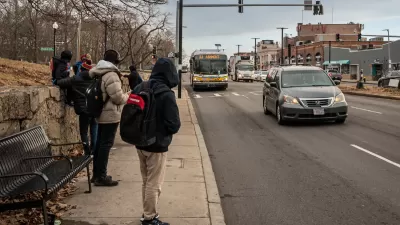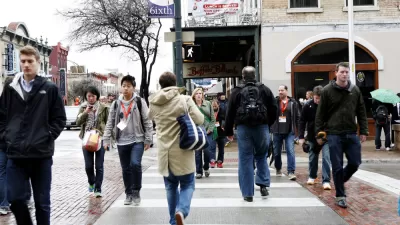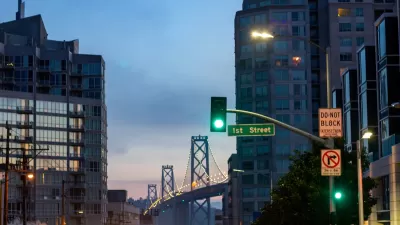Students at Emerson College live with the frustrations of the intersection of Boylston and Tremont streets everyday. They also have ideas for how to fix the intersection.
"Every day, swarms of Boston pedestrians scurry from all four corners of the intersection at Boylston and Tremont streets, jostling in the middle of the road like concertgoers in a mosh pit at a heavy-metal concert, as they try to beat the crosswalk countdown signals before the lights turn green and cars begin to go," writes Steve Annear.
The problem described by Annear inspired a Civic Art and Design Studio at nearby Emerson College to produce a collection of proposals to improve the congested intersection. One of the ideas is simple: "add five seconds to the crosswalk signals, so that people aren’t scrambling to safety in the final moments before drivers hit the gas and the ominous orange hand appears telling pedestrians to stay put."
The students worked in groups focused on improvements for "pedestrians, cyclists, drivers, and public transit vehicles." The student's effort is well-timed, according to Annear: "The city already is reviewing traffic signal timing in the area where Boylston and Tremont streets meet as part of a citywide effort…"
FULL STORY: Emerson students want more time to cross the street

Americans May Be Stuck — But Why?
Americans are moving a lot less than they once did, and that is a problem. While Yoni Applebaum, in his highly-publicized article Stuck, gets the reasons badly wrong, it's still important to ask: why are we moving so much less than before?

Using Old Oil and Gas Wells for Green Energy Storage
Penn State researchers have found that repurposing abandoned oil and gas wells for geothermal-assisted compressed-air energy storage can boost efficiency, reduce environmental risks, and support clean energy and job transitions.

Placekeeping: Setting a New Precedent for City Planners
How a preservation-based approach to redevelopment and urban design can prevent displacement and honor legacy communities.

San Francisco’s Muni Ridership Grew in 2024
The system saw its highest ridership since before the Covid-19 pandemic, but faces a severe budget shortage in the coming year.

Colorado Lawmakers Move to Protect BRT Funding
In the face of potential federal funding cuts, CDOT leaders reasserted their commitment to planned bus rapid transit projects.

Safe Streets Funding in Jeopardy
The Trump administration is specifically targeting bike infrastructure and other road safety projects in its funding cuts.
Urban Design for Planners 1: Software Tools
This six-course series explores essential urban design concepts using open source software and equips planners with the tools they need to participate fully in the urban design process.
Planning for Universal Design
Learn the tools for implementing Universal Design in planning regulations.
Heyer Gruel & Associates PA
City of Moreno Valley
Institute for Housing and Urban Development Studies (IHS)
City of Grandview
Harvard GSD Executive Education
Salt Lake City
NYU Wagner Graduate School of Public Service
City of Cambridge, Maryland





























